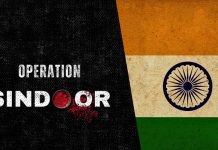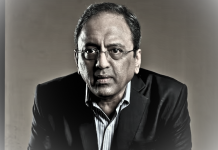
There was a storm created on Wednesday after fugitive businessman and former liquor baron, Vijay Mallya said that he had met with Union Finance Minister Arun Jaitley before leaving the country.
The charge was immediately denied, following which Mallya backtracked and said that there was no formal meeting.
The question is how did Mallya leave the country in the first place. It may be recalled that there was a total mix up or confusion regarding his look out circular issued before he left the country in 2016.
The Supreme Court was recently told that Mallya had left India for London on March 2 2016, the day the Debt Recovery Tribunal was to hear a matter in which a directive to stall payment of money from Diageo was sought. The other big question is how did he manage to fly out when there was a look out circular issued against him in October 2016? The LOC was issued by the Central Bureau of Investigation which has also questioned him on two occasions.
When a look out circular is issued against a person he is not supposed to leave the country without the permission of the investigating agency. In this case, Mallya being a Rajya Sabha member should have sought leave of absence from the House before leaving. This procedure was followed. As per the records he was present in the Rajya Sabha a day prior to him leaving the country. The big question now is how did all this miss the eye of the CBI or even the immigration department had a copy of the circular. Nature changed: Following the incident, the CBI came under immense pressure. It was then found that the nature of the Look out Circular was changed within one month of it being issued. As per the original LOC issued in October, he was to be detained by the airport authorities if was trying to leave the country. However with the changed nature of the LOC it meant that the authorities had to merely provide information about his travel plans.
In a lookout circular issued on 16 October 2015, CBI said if Mallya tries to leave the country, he should be detained at the exit point. In November, the agency asked for a revised circular where it asked the Bureau of Immigration to inform CBI about his departure and travel plans. Officials had said then that Mallya travelled abroad in October and returned in November. He made two trips in the first and last weeks of December and another in January, besides the recent trip reportedly to London on 2 March.
The lookout circular depends on the issuing authority and, unless they ask Bureau of Immigration to detain a person or to stop him from boarding a plane, no action is taken. After the CBI changed the lookout notice, the Bureau of Immigration did not make any attempt to stop him from travelling abroad, and every time he did, the agency was duly informed about it. When asked why CBI did not seek to impound his passport, it was said Mallya had been cooperating in the investigation by presenting himself for questioning, as and when required, and also providing documents sought by the agency. And since Mallya had been cooperating, there was no reason to stop him from travelling abroad, they said.
What the law states: According to a Supreme Court judgement, passport of a person can only be impounded when he has been chargesheeted or a trial is pending against him. Mallya had appeared for questioning three times since the lookout notice was issued, once in Delhi and twice in Mumbai between 9 and 12 December 2015. While the CBI tracked his movement, it however did not interfere as he had always returned to India.






